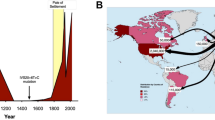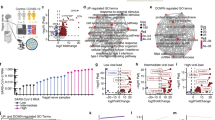Abstract
Familial dysautonomia (FD) is an autosomal recessive congenital neuropathy, primarily presented in Ashkenazi Jews. The most common mutation in FD patients results from a single base pair substitution of an intronic splice site in the IKBKAP gene which disrupts normal mRNA splicing and leads to tissue-specific reduction of IKBKAP protein (IKAP). To date, treatment of FD patients remains preventative, symptomatic and supportive. Based on previous in vitro evidence that tocotrienols, members of the vitamin E family, upregulate transcription of the IKBKAP gene, we aimed to investigate whether a similar effects was observed in vivo. In the current study, we assessed the effects of tocotrienol treatment on FD patients’ symptoms and IKBKAP expression in white blood cells. The initial daily doses of 50 or 100 mg tocotrienol, doubled after 3 months, was administered to 32 FD patients. Twenty-eight FD patients completed the 6-month study. The first 3 months of tocotrienol treatment was associated with a significant increase in IKBKAP expression level in FD patients’ blood. Despite doubling the dose after the initial 3 months of treatment, IKBKAP expression level returned to baseline by the end of the 6-month treatment. Clinical improvement was noted in the reported clinical questionnaire (with regard to dizziness, bloching, sweating, number of pneumonia, cough episodes, and walking stability), however, no significant effect was observed in any clinical measurements (weight, height, oxygen saturation, blood pressure, tear production, histamine test, vibration threshold test, nerve conduction, and heart rate variability) following Tocotrienol treatment. In conclusion, tocotrienol treatment appears significantly beneficial by clinical evaluation for some FD patients in a few clinical parameters; however it was not significant by clinical measurements. This open-label study shows the complexity of effect of tocotrienol treatment on FD patients’ clinical outcomes and on IKBKAP expression level compared to in vitro results. A longitudinal study with an increased sample size is required in the future to better understand tocotrienol affect on FD patients.



Similar content being viewed by others
Abbreviations
- FD:
-
Familial dysautonomia
- IKBKAP :
-
Inhibitor of kappa light polypeptide gene enhancer in B cells kinase complex associated protein
- IKAP:
-
I-kB kinase associated protein
- HPLC:
-
High performance liquid chromatography
- WBC:
-
White blood cells
References
Alonso J, Garcia-Miguel P, Abelairas J, Mendiola M, Sarret E, Vendrell MT, et al. (2001) Spectrum of germline RB1 gene mutations in Spanish retinoblastoma patients: phenotypic and molecular epidemiological implications. Human Mutat 17(5):412–422
Anderson SL, Coli R, Daly IW, Kichula EA, Rork MJ, Volpi SA, et al. (2001) Familial dysautonomia is caused by mutations of the IKAP gene. Am J Hum Genet 68(3):753–758
Anderson SL, Qiu J, Rubin BY (2003a) EGCG corrects aberrant splicing of IKAP mRNA in cells from patients with familial dysautonomia. Biochem Biophys Res Commun 310(2):627–633
Anderson SL, Qiu J, Rubin BY (2003b) Tocotrienols induce IKBKAP expression: a possible therapy for familial dysautonomia. Biochem Biophys Res Commun 306(1):303–309
Andreassi C, Jarecki J, Zhou J, Coovert DD, Monani UR, Chen X, et al. (2001) Aclarubicin treatment restores SMN levels to cells derived from type I spinal muscular atrophy patients. Human Mol Genet 10(24):2841–2849
Axelrod FB (2002) Hereditary sensory and autonomic neuropathies. Familial dysautonomia and other HSANs. Clinical autonomic research. Off J Clin Auton Res Soc 12(Suppl 1):I2–14.
Axelrod FB (2004) Familial dysautonomia. Muscle Nerve 29(3):352–363
Axelrod FB (2005) Familial dysautonomia: a review of the current pharmacological treatments. Expert opin Pharmacother 6(4):561–567
Axelrod FB, Maayan CH (1999) Familial Dysautonomia. In Gellis and Kagen's current pediatric therapy, 16th ed., eds. F. D. Burg, J. R. Ingelfinger, E. R. Wald, and R. A. Polin, 466-469. Philadelphia: WB Saunders
Birrell GW, Ramsay JR, Tung JJ, Lavin MF (2001) Exon skipping in the ATM gene in normal individuals: the effect of blood sample storage on RT-PCR analysis. Human Mutat 17(1):75–76
Blades KJ, Patel S, Aidoo KE (2001) Oral antioxidant therapy for marginal dry eye. Eur J Clin Nutri 55(7):589–597
Bochner R, Ziv Y, Zeevi D, Donyo M, Abraham L, Ashery-Padan R, et al. (2013) Phosphatidylserine increases IKBKAP levels in a humanized knock-in IKBKAP mouse model. Human Mol Genet 22(14):2785–2794
Chang JG, Hsieh-Li HM, Jong YJ, Wang NM, Tsai CH, Li H (2001) Treatment of spinal muscular atrophy by sodium butyrate. Proceed Natl Acad Sci USA 98(17):9808–9813
Cheishvili D, Maayan C, Smith Y, Ast G, Razin A (2007) IKAP/hELP1 deficiency in the cerebrum of familial dysautonomia patients results in down regulation of genes involved in oligodendrocyte differentiation and in myelination. Hum Mol Genet 16(17):2097–2104
Cheishvili D, Laiba E, Rekhtman D, Claman A, Razin A, Maayan C (2014) Dynamic changes in IKBKAP mRNA levels during crisis of familial dysautonomia patients. Auton Neurosci Basic Clin 180:59–65
Cook-Sather SD, Viola L, Zur KB, Rubin BY (2012) Case scenario: perioperative administration of tocotrienols and green tea extract in a child with familial dysautonomia. Anesthesiology 117(3):639–645
Cuajungco MP, Leyne M, Mull J, Gill SP, Lu W, Zagzag D, et al. (2003) Tissue-specific reduction in splicing efficiency of IKBKAP due to the major mutation associated with familial dysautonomia. Am J Human genet 72(3):749–758
Galbis-Estrada C, Pinazo-Duran MD, Cantu-Dibildox J, Marco-Ramirez C, Diaz-Llopis M, Benitez-del-Castillo J (2013) Patients undergoing long-term treatment with antihypertensive eye drops responded positively with respect to their ocular surface disorder to oral supplementation with antioxidants and essential fatty acids. Clin Inter Aging 8:711–719
Gold-von Simson G, Goldberg JD, Rolnitzky LM, Mull J, Leyne M, Voustianiouk A, et al. (2009) Kinetin in familial dysautonomia carriers: implications for a new therapeutic strategy targeting mRNA splicing. Pediatric Res 65(3):341–346
Guimaraes CP, Lemos M, Menezes I, Coelho T, Sa-Miranda C, Azevedo JE (2001) Characterisation of two mutations in the ABCD1 gene leading to low levels of normal ALDP. Human Genet 109(6):616–622
Guo D, Tan FK, Cantu A, Plon SE, Milewicz DM (2001) FBN1 exon 2 splicing error in a patient with Marfan syndrome. Am J Med Genet 101(2):130–134
Keren H, Donyo M, Zeevi D, Maayan C, Pupko T, Ast G (2010) Phosphatidylserine increases IKBKAP levels in familial dysautonomia cells. PLoS ONE 5(12):e15884
Lee BL, New AL, Ong CN (2003) Simultaneous determination of tocotrienols, tocopherols, retinol, and major carotenoids in human plasma. Clin Chem 49(12):2056–2066
Liebman SD (1956) Ocular manifestations of Riley-day syndrome; familial autonomic dysfunction. AMA Arch Ophthalmol 56(5):719–725
Maayan C, Kaplan E, Shachar S, Peleg O, Godfrey S (1987) Incidence of familial dysautonomia in Israel 1977-1981. Clin Genet 32(2):106–108
Mayer K, Ballhausen W, Leistner W, Rott H (2000) Three novel types of splicing aberrations in the tuberous sclerosis TSC2 gene caused by mutations apart from splice consensus sequences. Biochimica et biophysica acta 1502(3):495–507
Miller ER 3rd, Pastor-Barriuso R, Dalal D, Riemersma RA, Appel LJ, Guallar E (2005) Meta-analysis: high-dosage vitamin E supplementation may increase all-cause mortality. Ann Internal Med 142(1):37–46
Miyamoto K, Shiozaki M, Shibata M, Koike M, Uchiyama Y, Gotow T (2009) Very-high-dose alpha-tocopherol supplementation increases blood pressure and causes possible adverse central nervous system effects in stroke-prone spontaneously hypertensive rats. J Neurosci Res 87(2):556–566
Mustad VA, Smith CA, Ruey PP, Edens NK, DeMichele SJ (2002) Supplementation with 3 compositionally different tocotrienol supplements does not improve cardiovascular disease risk factors in men and women with hypercholesterolemia. Am J Clin Nutri 76(6):1237–1243
Nakamura H, Furukawa F, Nishikawa A, Miyauchi M, Son HY, Imazawa T, et al. (2001) Oral toxicity of a tocotrienol preparation in rats. Food Chem Toxicol Int J Publi Brit Ind Biol Res Assoc 39(8):799–805
Nissim-Rafinia M, Kerem B (2002) Splicing regulation as a potential genetic modifier. Trends genet TIG 18(3):123–127
Pagani F, Buratti E, Stuani C, Romano M, Zuccato E, Niksic M, et al. (2000) Splicing factors induce cystic fibrosis transmembrane regulator exon 9 skipping through a nonevolutionary conserved intronic element. J Biol Chem 275(28):21041–21047
Patel S, Plaskow J, Ferrier C (1993) The influence of vitamins and trace element supplements on the stability of the pre-corneal tear film. Acta Ophthalmol 71(6):825–829
Peponis V, Papathanasiou M, Kapranou A, Magkou C, Tyligada A, Melidonis A, et al. (2002) Protective role of oral antioxidant supplementation in ocular surface of diabetic patients. Brit J Ophthalmol 86(12):1369–1373
Peponis V, Bonovas S, Kapranou A, Peponi E, Filioussi K, Magkou C, et al. (2004) Conjunctival and tear film changes after vitamin C and E administration in non-insulin dependent diabetes mellitus. Med Sci Monitor Int Med J Exp Clin Res 10(5):CR213–CR217
Pfaffl MW (2001) A new mathematical model for relative quantification in real-time RT-PCR. Nucleic Acids Res 29(9):e45
Rubin BY, Anderson SL, Kapas L (2008) Can the therapeutic efficacy of tocotrienols in neurodegenerative familial dysautonomia patients be measured clinically? Antioxidants Redox Signaling 10(4):837–841
Slaugenhaupt SA, Blumenfeld A, Gill SP, Leyne M, Mull J, Cuajungco MP, et al. (2001) Tissue-specific expression of a splicing mutation in the IKBKAP gene causes familial dysautonomia. Am J Human genet 68(3):598–605
Slaugenhaupt SA, Mull J, Leyne M, Cuajungco MP, Gill SP, Hims MM, et al. (2004) Rescue of a human mRNA splicing defect by the plant cytokinin kinetin. Human Mol Genet 13(4):429–436
Smith AA, Dancis J (1963) Response to intradermal histamine in familial dysautonomia–a diagnostic test. J pediatrics 63:889–894
Smith A, Farbman A, Dancis J (1965) Absence of taste-Bud papillae in familial dysautonomia. Science 147(3661):1040–1041
Suzuki YJ, Tsuchiya M, Wassall SR, Choo YM, Govil G, Kagan VE, et al. (1993) Structural and dynamic membrane properties of alpha-tocopherol and alpha-tocotrienol: implication to the molecular mechanism of their antioxidant potency. Biochemistry 32(40):10692–10699
Traber MG, Kayden HJ (1984) Vitamin E is delivered to cells via the high affinity receptor for low-density lipoprotein. Am J Clin Nutr 40(4):747–751
Acknowledgments
This study was enabled by grants to the Israeli FD center from the Dina Farkash Fund, the Israeli Familial Dysautonomia Organization, the Regina Fleischer Fund and the Dysautonomia Foundation Inc., USA.
We thank the Israeli Familial Dysautonomia Organization and their scientific group for advice in the protocol, and distributing tocotrienol to the patients as well as some medical equipment.
We also thank the Developmental Biology and Cancer Research, of the Hebrew University, Hadassah School of Medicine, Jerusalem for technical support and especially to Dr. R. Shemer and Dr. Eduard Berenshtein.
We thank Dr. A. Baharav and Dr. J. Giris for heart rate variability tests.
Author information
Authors and Affiliations
Corresponding author
Ethics declarations
The Ethics Committee of Hadassah University Hospital (IRB) approved these study protocols. Informed consent was obtained from FD patients or their guardians before each study. Tocotrienol is a food supplement and thus does not require FDA approval.
Additional information
David Cheishvili and Channa Maayan equally contributed as authors
Rights and permissions
About this article
Cite this article
Cheishvili, D., Maayan, C., Holzer, N. et al. Tocotrienol Treatment in Familial Dysautonomia: Open-Label Pilot Study. J Mol Neurosci 59, 382–391 (2016). https://doi.org/10.1007/s12031-016-0760-5
Received:
Accepted:
Published:
Issue Date:
DOI: https://doi.org/10.1007/s12031-016-0760-5



